Finding the right bat will make a huge difference in an individual’s batting average performance over the course of many games. A well-crafted bat can increase a player’s confidence and improve hitting distance. You don’t need to break the bank to get a well-performing bat, but it is above all a good idea to find one with the correct weight and length to match the size of the player. In this equipment guide, Dugout Debate covers all the bases: an overview of the best youth baseball bats of this year, information on youth bat regulations, the most important things to look for, and how to pick the right bat for a youth player.
All the bats that made the cut are constructed to last multiple seasons. Whether it is your first time purchasing a quality youth bat for your child or teen or you’re upgrading from an older model, there are some clear winners that are worth checking out. If you’re looking for BBCOR bats for adult baseball players we have a guide here.
Youth Baseball Bat Size Chart
The sizing below should be considered a general rule of thumb. It’s an excellent starting point, but player preference still comes into play when selecting a bat. Always check first with your local league’s requirements before purchasing a bat.
| Association | Age | Weight Drop |
| USA / USSSA | 10 & Under | -11+ |
| USA / USSSA | 10-12 | -10 |
| USA / USSSA | 12-13 | -8 |
| USA / USSSA | 13-14 | -5 |
| BBCOR | High School | -3 |
Overview of the 15 Best Youth Baseball Bats
Here is a chart of the most popular youth baseball bats for this season. We’ve ordered them by price ascending for you so that you can easily find one that fits in your budget.
| Image | Bat | Build | Barrel | Drop | Price |
|---|---|---|---|---|---|
 | 1. Rawlings Raptor USA Youth Baseball Bat | Alloy; One-Piece; 5 Sizes | 2 ¼ | -10 | |
 | 2. Easton SPEED USA Youth Baseball Bat | Alloy; One-Piece ; 7 Sizes | 2 ⅝ | -10 | |
 | 3. Louisville Slugger Youth Prime Bat [Wood] | Maple; One-Piece; 5 Sizes | n/a | -8 | |
 | 4. DeMarini Sabotage One | Alloy; Two-Piece; 5 Sizes | 2 ⅜ | -10, -11 | |
 | 5. Marucci Youth Pro Maple Bat [Wood] | Maple; One-Piece; 6 Sizes | 2 ¼ | -5 | |
 | 6. Easton XL3 Youth Big Barrel | Alloy; One-Piece; 2 Sizes | 2 ⅝ | -8 | |
 | 7. Louisville Slugger Omaha USA Baseball Bat | Alloy; One-Piece; 6 Sizes | 2 ⅝ | -10 | |
 | 8. Combat Youth Maxum Big Barrel Senior League Bat | Composite; One-Piece; 1 Size | 2 ¾ | -10 | |
 | 9. Easton ALPHA 360 | Composite; One-Piece; 10 Sizes | 2 ⅝ | -5, -8, -11 | |
 | 10. Marucci CAT COMPOSITE Senior League Bat | Composite; Two-Piece; 11 Sizes | 2 ¾ | -5, -8, -10 | |
 | 11. DeMarini CF Zen Balanced Bat | Composite; Two-Piece; 4 Sizes | 2 ⅝ | -10 | |
 | 12. Demarini Voodoo Balanced | Alloy & Composite; Two-Piece; 5 Sizes | 2 ⅝ | -5, -9, -10 | |
 | 13. Marucci Hex Connect Senior League | Composite; Two-Piece; 4 Sizes | 2 ¾ | -8 | |
 | 14. Easton ADV 360 Youth Teen Bat | Composite; Two-Piece; 11 Sizes | 2 ⅝ | -5, -8, -10 | |
 | 15. Demarini CF USSSA Baseball Bat | Composite; Two-Piece; 4 Sizes | 2 ¾ | -8 |
The Best Youth Baseball Bats 2021
Here is our line-up of the best youth baseball bats as well as the best youth big barrel bats. In this list, we have included 2017-2021 models (sometimes picking up an older model offers a superior value).
The first thing you should check before buying a youth bat is whether your youth player is in a league that accepts bigger barrels than the younger youth leagues’ 2 ¼ inch barrel. These larger barrel bats are commonly called Senior League or Youth Big Barrel baseball bats. These larger barrel bats usually feature a diameter of 2 ⅝ inches or 2 ¾ inches. Refer to our overview comparison table above and see the column that lists the barrel size for easy browsing.
#1. Rawlings Raptor Alloy USA Baseball Bat
- Barrel Size: 2 ¼
- Material: Alloy
- Build: One-Piece
- Drop: -8
- Sizes: 5
One of the newer releases on our lists comes from Rawlings. Their Raptor Alloy USA bat will give your youth player the power that they need at a price that you won’t cringe at. The drop weight is low, which gives your player more speed on the swing. It’s available currently in 4 different sizes.
#2. Easton SPEED Youth Baseball Bat
- Barrel Size: 2 ⅝
- Material: Alloy
- Build: One Piece
- Drop: -10
- Sizes: 7
The Easton SPEED Youth Baseball Bat is one of the most popular bats found in youth leagues. It has a -10 drop weight. Easton is one of — if not perhaps the — leading manufacturer of the best bats available. The SPEED bat is constructed with an ALX50 military-grade aluminum that offers a good balance of swing speed and durability. It is a one-piece design, therefore the handle is also composed of the ALX50 material. Similarly, the pro tack Easton Flex grip on the handle is perfect for youth players. The barrel diameter of this bat is 2 5/8 inch and is offered in 27 through 32 inch options.
#3. Louisville Slugger Youth Prime Bat
- Material: Maple
- Build: One Piece
- Drop: -8
- Sizes: 5
One of the newest options of youth baseball bats from the Louisville Slugger series is the Youth Prime Maple. It’s built with a balanced swing weight and made with high-quality maple wood. You can get the Youth Prime Bat in sizes 27″ to 31″. We recommend double-checking your league to make sure they allow wood bats before dropping any cash on this one unless of course, you’re buying it just to have a little extra fun!
#4. Demarini Sabotage One Youth Baseball Bat
- Material: Alloy
- Build: One Piece
- Drop: -10, -11
- Sizes: 5
Another top youth bat that is a great value is the DeMarini Sabotage Youth Baseball Bat. The barrel design is labeled with their Missile Forged Alloy Barrel, which is supposed to give your swing extra power and speed. The alloy is thin, so the bat isn’t too weighty, and the composite handle will help give your youth player a strong grip.
#5. Marucci Pro Maple Wood Youth Bat

- Material: Maple
- Build: One Piece
- Drop: -5
- Versions: 4 Sizes
If you’re looking for a wood bat (be sure to check your league) you need to see this option from Marucci. You just can’t beat the good ol’ crack sound off a wood bat! This is a gorgeous black maple bat that’s been bone rubbed to give it great density. It’s available in 4 different sizes, ranging from 27″ to 31″, and is also covered by a 30-day manufacturer warranty, so you can get a feel for it quickly and see if it’s right for you.
#6. Easton XL3 Youth Big Barrel Baseball Bat
- Material: Alloy
- Build: One Piece
- Drop: -8
- Versions: 3 Sizes
Making our list again this year is the Easton XL3, the third edition of this big barrel bat with an end-loaded swing weight that gives players more swing power. The large barrel expands the sweet spot and hitting zone, without adding extra weight. Furthermore, the one piece alloy design gives it a more traditional feel.
#7. Louisville Slugger Omaha USA League Baseball Bat
- Material: Alloy
- Build: One Piece
- Drop: -10
- Sizes: 6
The Louisville Slugger Omaha Baseball Bat is a durable, one-piece, alloy constructed bat that gives you a literal bang for your buck. The way it’s designed is intended to give the swing what they refer to as the “trampoline effect” when it connects with the ball. It’s an underrated bat, giving you more for your money. The diameter is 2 and 5/8″ around, and it is USA baseball bat certified.
#8. Combat Youth Maxum Big Barrel Baseball Bat
- Barrel Size: 2 ¾
- Material: Composite
- Build: One-Piece
- Drop: -10
- Sizes: 1
If your youth player is in senior league, a good option for them is the Combat Maxum. It’s a big barrel, with 2.75″ of diameter, you’ll get consistency throughout your whole swing with this guy. The grip is made from Combat’s Lizard Skin’s wrap tape, for enhanced comfort and no-slip tackiness.
#9. Easton ALPHA 360 Composite Youth Baseball Bat
- Material: Composite
- Build: One Piece
- Drop: -5, -8, -11
- Sizes: 10
The Easton ALPHA 360 is a youth baseball bat with some upgrades compared to the previous model we had featured here. It also incorporates the speed design that is found in many premium youth bats, optimized for low M.O.I. It’s a one piece design that features Easton’s patented Carbon Core technology and 360 Engineering. Everything in this bat is seamlessly integrated, from the well-sized handle knob to the sturdy end cap. The Speed Cap tech limits handle vibration and redirects contact energy back to the sweet spot for a nice natural sound on impact.
#10. Marucci CAT COMPOSITE Baseball Bat
- Material: Composite
- Build: Two-Piece
- Drop: -5, -8, -10
- Versions: 11 Sizes
The Marucci CAT Composite is a composite Senior League USSSA bat with a 2 3/4 inch barrel. It features two-piece composite construction, resulting in maximum power and reducing vibration sting. It’s easily one of the best-rated youth bats on our list. Our favorite benefit of this bat is the SDX EXT connection tech which is basically anti-vibration technology but also helps energy transfer from bat to ball.
#11. DeMarini CF Zen Balanced Baseball Bat
- Material: Composite
- Build: Two Piece
- Drop: -10
- Versions: 4 Sizes
The DeMarini CF Zen Balanced Baseball Bat is going to bring your youth player peace of mind before they step up to the plate (the ball trampolining off the bat may not be so peaceful, watch out pitchers!). This DeMarini youth bat is new to the market and features some never before used technology. The bat incorporated DeMarini’s Para Flex Plus (large sweet spot barrel), 3Fusion connection (optimal bat to ball energy), and Reaction end cap (increases barrel performance). They used a two-piece build with composite material to create a well-balanced swing that will give players confidence, and help them make more accurate connections.
#12. DeMarini Voodoo Balanced Baseball Bat
- Barrel Size: 2 ⅝
- Material: Alloy & Composite
- Build: Two-Piece
- Drop: -5, -9, -10
- Sizes: 5
An upgrade from the Voodoo Overlord, DeMarini brings hitters the Voodoo Balanced. It features a balanced swing weight, a handle that reduces vibration, and an end cap that optimizes weight and feel throughout the barrel. All these added features plus a sweet looking style, with that optimal DeMarini quality and sizing options – is why we had to include this series in our list once again.
#13. Marucci Hex Connect Senior League Baseball Bat
- Barrel Size: 2 ¾
- Material: Composite
- Build: Two-Piece
- Drop: -8
- Versions: 4 Sizes
Replacing one of the older model Marucci bats on our list is the Hex Connect Senior League Baseball Bat. It features two-piece composite construction, with the maximum allowed barrel length for one of the biggest sweet spots among the competition. Marucci uses a special shock absorbency technology. Therefore, players don’t feel the power all the way up to your arm when you make contact.
#14. Easton ADV 360 Composite Baseball Bat
- Barrel Size: 2 ⅝
- Material: Composite & Carbon
- Build: Two Piece
- Drop: -5, -8, -10
- Sizes: 11
Step it up with the Easton ADV 360 Composite Baseball Bat. This is a more expensive bat but is engineered with Easton’s Ultra-Lite Launch Composite with carbon fiber instead of aluminum. Easton’s two-piece iSo ConneXion technology is patented, so you won’t find another youth baseball bat with the same build. It’s made in many sizes/drop weights and is approved for USA Baseball.
#15. Demarini CF USSSA Baseball Bat
- Barrel Size: 2 ¾
- Material: Composite
- Build: Two Piece
- Drop: -8
- Sizes: 4
If money is no issue, here’s an option from DeMarini. Their CF Youth Bat with a -8 drop and two-piece build featuring a composite handle offers an improved feel over DeMarini’s previous CF releases. Like the CF Zen, Paraflex Plus, ReAction End Cap, and 3Fusion Connection technology combine to make a force to be reckoned with. That’s a lot of innovation. If you want to put the outfielders in backpedal mode all game long, here’s the bat!
What is BPF 1.15?
BPF stands for Bat Performance Factor. It is a measurement of how fast the ball comes off the bat. The terminology used to describe this phenomenon is the trampoline effect of the bat’s barrel. This standard was put in place by USSSA (United States Specialty Sports Association) to protect pitchers and other players from dangerous ball speeds.
A BPF of 1.15 has been found to be roughly the equivalent of the BPF of a wood bat. Youth bats must be meet this standard and be stamped with the 1.15 BPF mark to be approved for play.
Nearly all aluminum alloy and hybrid bats clear this standard, but it gets touch-and-go with composite bats. All of the bats that made our list pass BPF criteria. If you are unsure of the rules governing your league, it’s a good idea to check with the coach or league director.
How to Select the Right Youth Baseball Bat
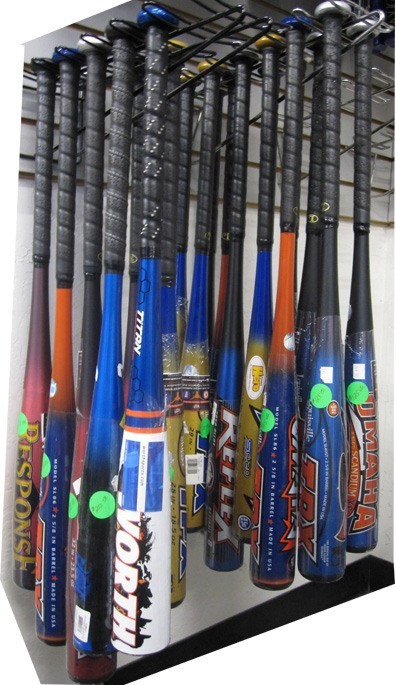
Buying a youth bat is certainly more involved now than it used to be. Back in 1884, there was only one commercial bat available: the Louisville Slugger. There are now numerous brands, materials, and lengths. We’ve long since waved goodbye to the days of grabbing any old bat that may have been collecting dust in the garage for years. Youth leagues have become extremely competitive and players are looking for anything that will give them an edge. Youth baseball bats are the most difficult bat type to select because youth players differ so much in their ability and size. Bat selection will have a significant impact on hitting technique and swing speed. We include a chart below that aids you in finding the ideal bat size for the player’s height and body weight.
Construction
Youth baseball bats are constructed with composite, aluminum, or are a hybrid of both.
Unlike high school and college leagues that accept up to 2 5/8 inch barrels, nearly all youth leagues mandate a 2 ¼ inch barrel bat:
There are some exceptions though, and if your league allows you to take advantage of larger barrels such as 2 5/8 or 2 ¾ you’ll want to look at our best youth big barrel bats section.
Weight
The best youth bats are often lighter, with a drop (length-to-weight ratio) between -8 and -13. Drop weight is calculated by subtracting the length of the bat from the weight. So a bat that is 34 inches long but weighs 26 pounds has a drop weight of -8.
A bat that has a drop weight of -13 will be easier to swing than compared to a -8 bat. Remember the heaviest bats are always the best. Too heavy, and the bat will be hard to swing and control. But if you go too light, and the hitter will lose some ability to hit the ball with optimal power.
A helpful bat weight test is that if a player cannot keep their arm straight and hold the bat out to their side with one hand at shoulder level for 15-20 seconds, the bat is too heavy for them. If you follow the basic size charts below you’ll likely find a bat that passes this test. The bat length and weight really go hand-in-hand as the same version of a bat, the longer forms will always be heavier.
To summarize, these are the major factors you want to key an eye on:
- Bat length. Measured in inches. Usually range from 27” to 32” in length.
- Bat weight. Measured in ounces. We’ve included a couple of charts to give you an idea.
- Length-to-weight ratio. Youth bats have the largest drop weight of any bats available from around -7 to -14.
- Construction material. Alloy bats usually made from aircraft-grade alloys, in contrast, composite bats are made of composite fibers. Finally, hybrid bats combine different materials such as alloy with carbon fibers.
Size Charts
Youth League (6-10 yrs)
| Player Height | Bat Weight |
| 48-50″ | 16-17 oz. |
| 51-54″ | 17-18 oz. |
| 55-59″ | 18-19 oz. |
| 60+” | 19-20 oz. |
Intermediate Youth League (11-13 yrs)
| Player Weight | Bat Weight |
| 70-80 lbs. | 18-19 oz. |
| 81-100 lbs. | 19-20 oz. |
| 101-120 lbs. | 20-21 oz. |
| 121-140 lbs. | 21-22 oz. |
| 141+ lbs. | 22-23 oz. |
High school starts for most kids around 14 or 15 years of age. In these leagues, BBCOR certification is required. First of all, if you’re looking for BBCOR baseball bats, we have a guide here.
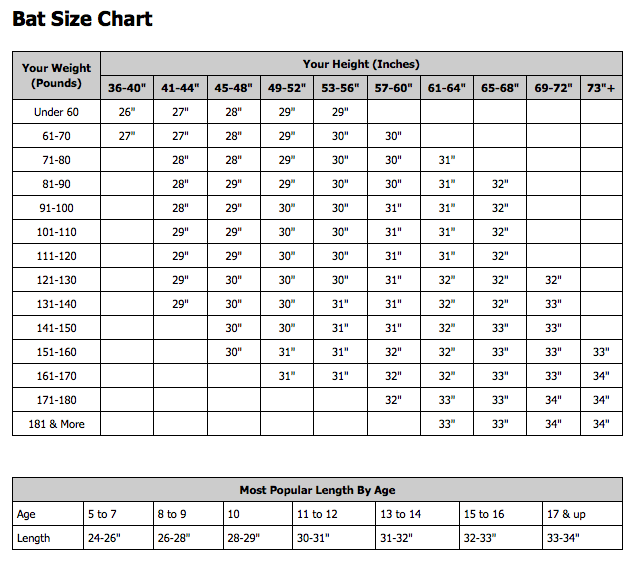
Different Parts & Types of Baseball Bats
Whether your kid wants a bat to join in the neighborhood baseball game or you have a high schooler that is working towards a college scholarship you should arm yourself with a bit more information to help you find the perfect bat.
Obviously, a great bat can’t turn an average player into a champion by itself, just like the Nimbus 2000 didn’t make Harry Potter the best seeker in Hogwarts history.
A player’s skill and innate ability come first and foremost. But having the right bat can improve hitting dramatically, and aid the hitter in developing good habits.
The Anatomy of a Baseball Bat:
These are the different parts that are found in almost every bat. Though each manufacturer puts their own spin on these parts, all bats have the same basic anatomy.
- Barrel – The top part of the bat used to give the ball a good smacking. This is where the Holy Grail lies known as the “sweet spot.” The longer the barrel, as a result, the more forgiving and larger the sweet spot. A smaller barrel may have a reduced sweet spot, but it will be lighter weight and, therefore, offer a faster swing speed. Bat manufacturers use the diameter around this part of the bat to come up with barrel size.
- Grip – This part of the bat covers the handle. Most bat grips are either leather or synthetic. Rubber grips will decrease sting in the palms when making an awkward connection.
- Knob – The end closest to the hitter is completed with a knob. This helps the player maintain a steady grip even after the deadliest of slices.
- Taper – The taper of the bat is a metric that indicates the diameter of the bat’s handle. A larger taper will also reduce the sting when the bat makes contact with the ball. Obviously, a larger taper will add additional weight to the bat.
- Cap – This is located on the end of the bat farthest from the batter. Some caps are designed to retain all the energy the bat generates when it strikes the ball.
The Types of Baseball Bats:
Here are the main types of bats that manufacturers offer.
- Aluminum. Aluminum bats have become very popular with kids that play league sports. Consequently, in some leagues, aluminum bats are required. Another term many manufacturers use as a substitute for aluminum is “alloy.” If they say it is an alloy bat that’s just another name for aluminum. They are lighter than traditional wood bats, allowing a player no matter what their size to swing hard. These bats are available in single or double-layer construction, with double-layer offering greater power and ball rebound. Aluminum, unlike composite and wood bats, does not require a break-in period.
- Composite. Composite bats are generally the most expensive bats on the market. These use the latest bat technology. They are made of fibers such as Kevlar, carbon, graphite, and fiberglass. Thanks to these fibers, they are even lighter than aluminum alloys, making for the absolute fastest swing speed. They do have a break-in period of almost 100-200 swings.
- Hybrid. These bats are constructed as a middle ground between aluminum and composite bats. They are a less expensive option than full composite and offer some of the benefits of composite type bats.
- Wood. Most youth leagues do not allow the use of wood bats. Hence, these bats are more of a nostalgia throwback thing. Because of this, some hitting coaches will incorporate the use of wood bats to help teach kids proper swing technique. A major drawback of wood bats is that they have a tendency to break.

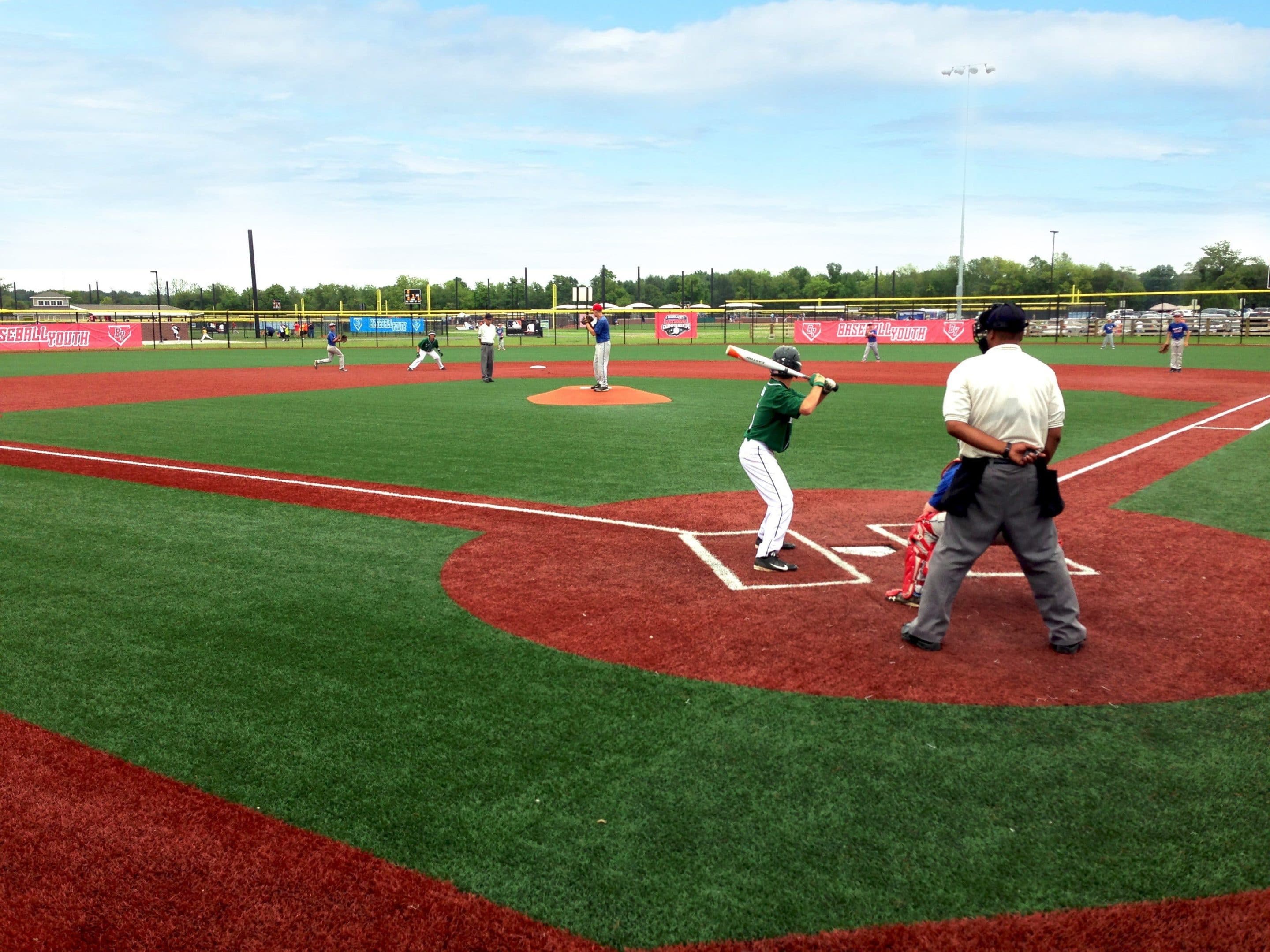
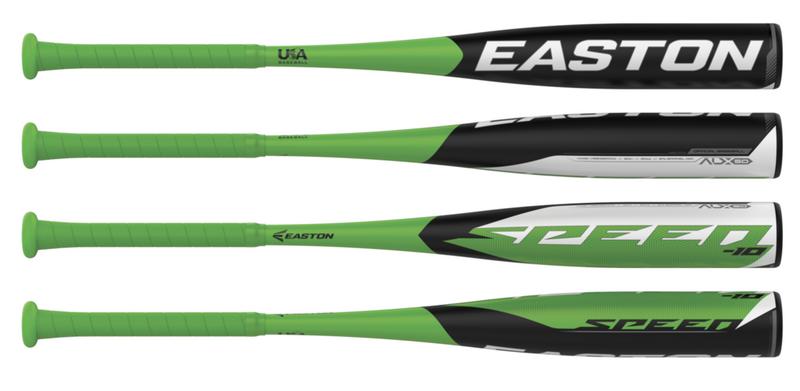








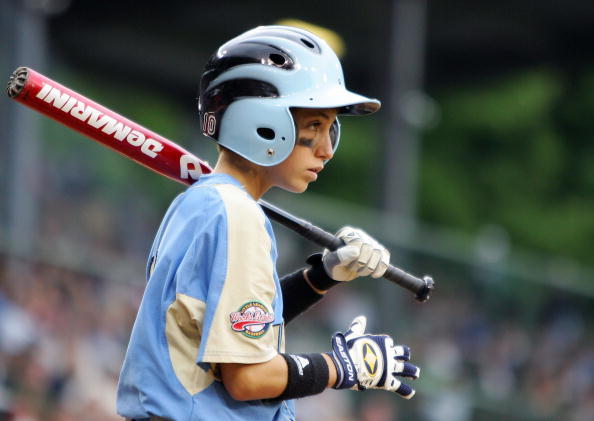
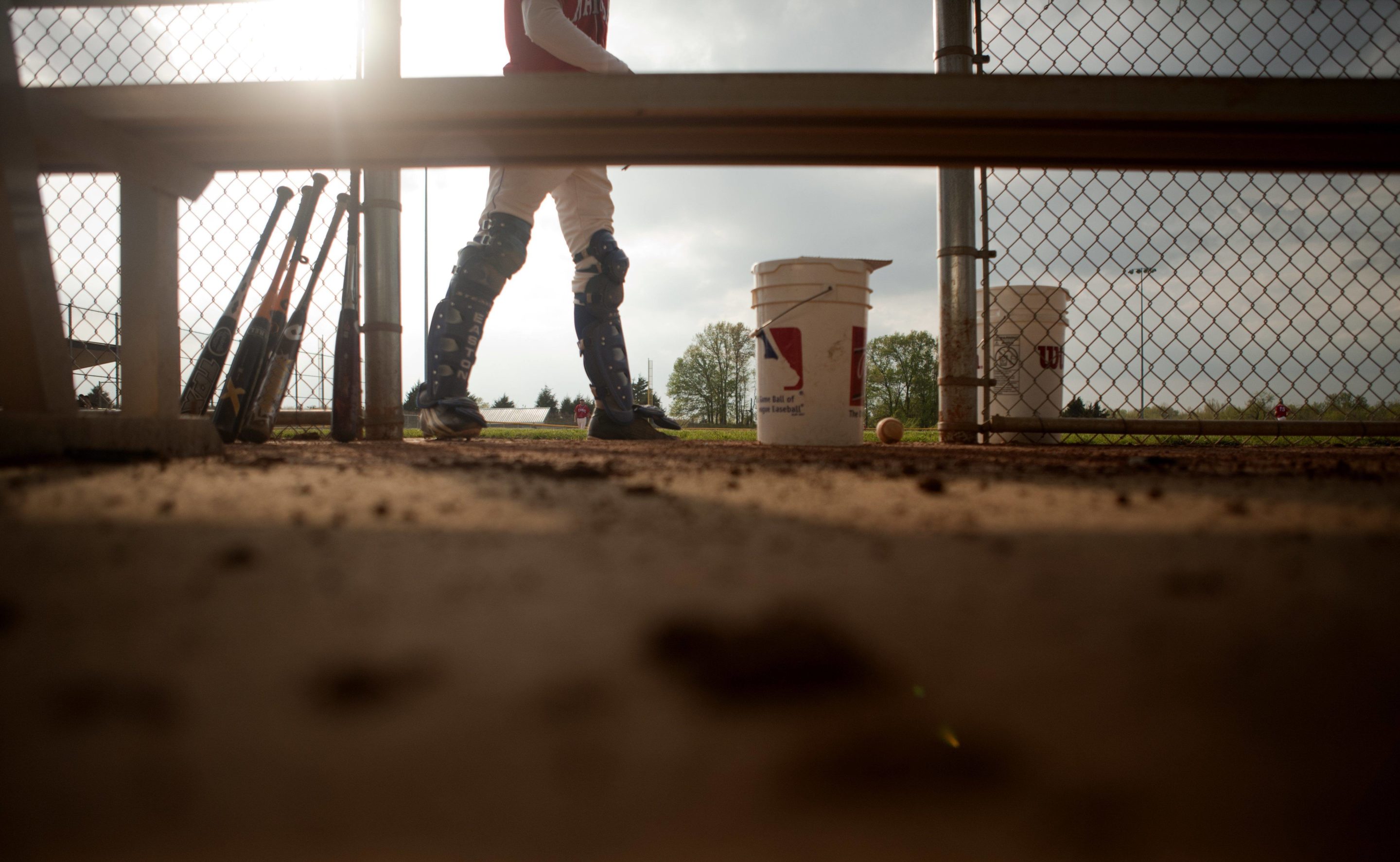
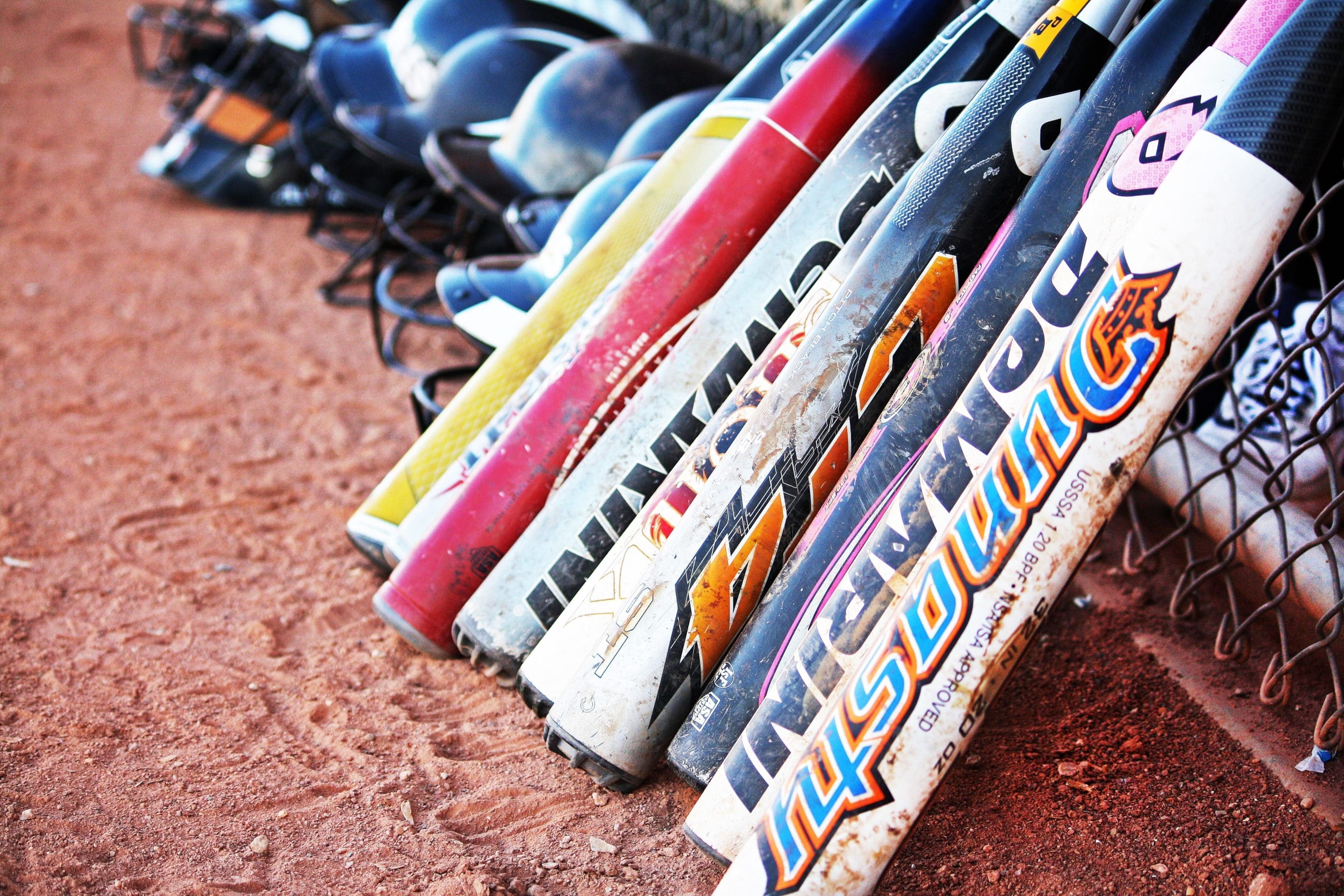
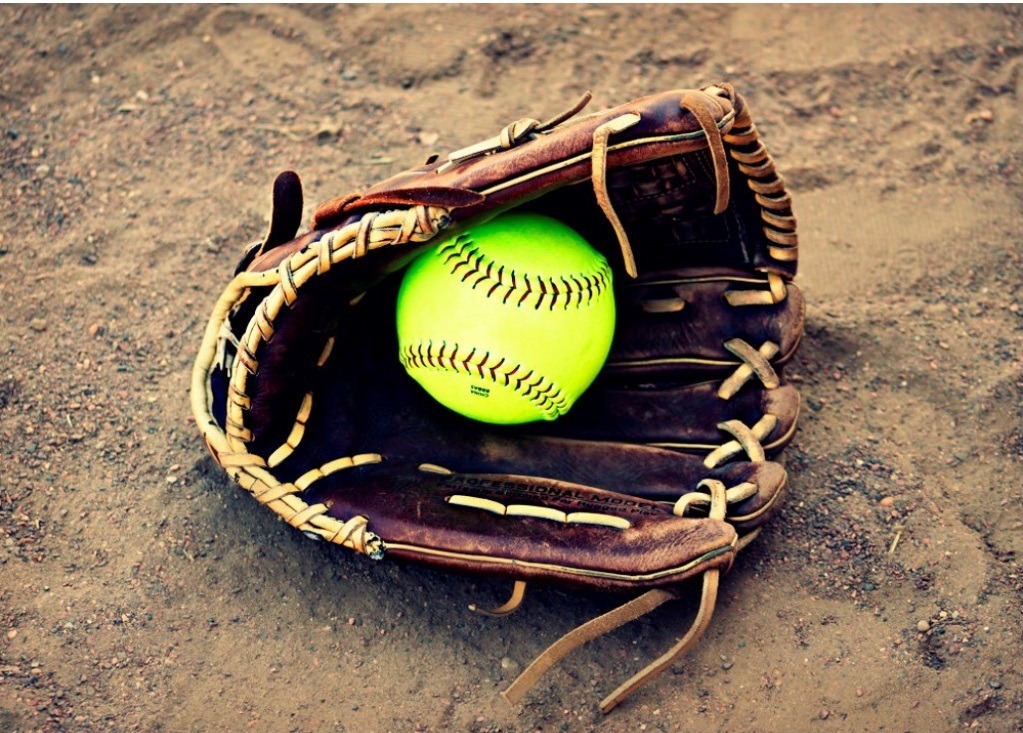

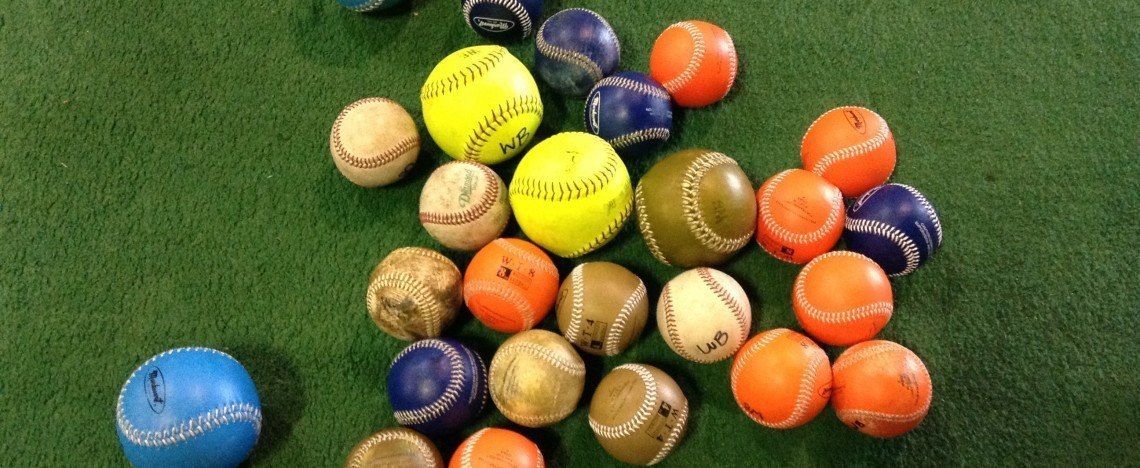
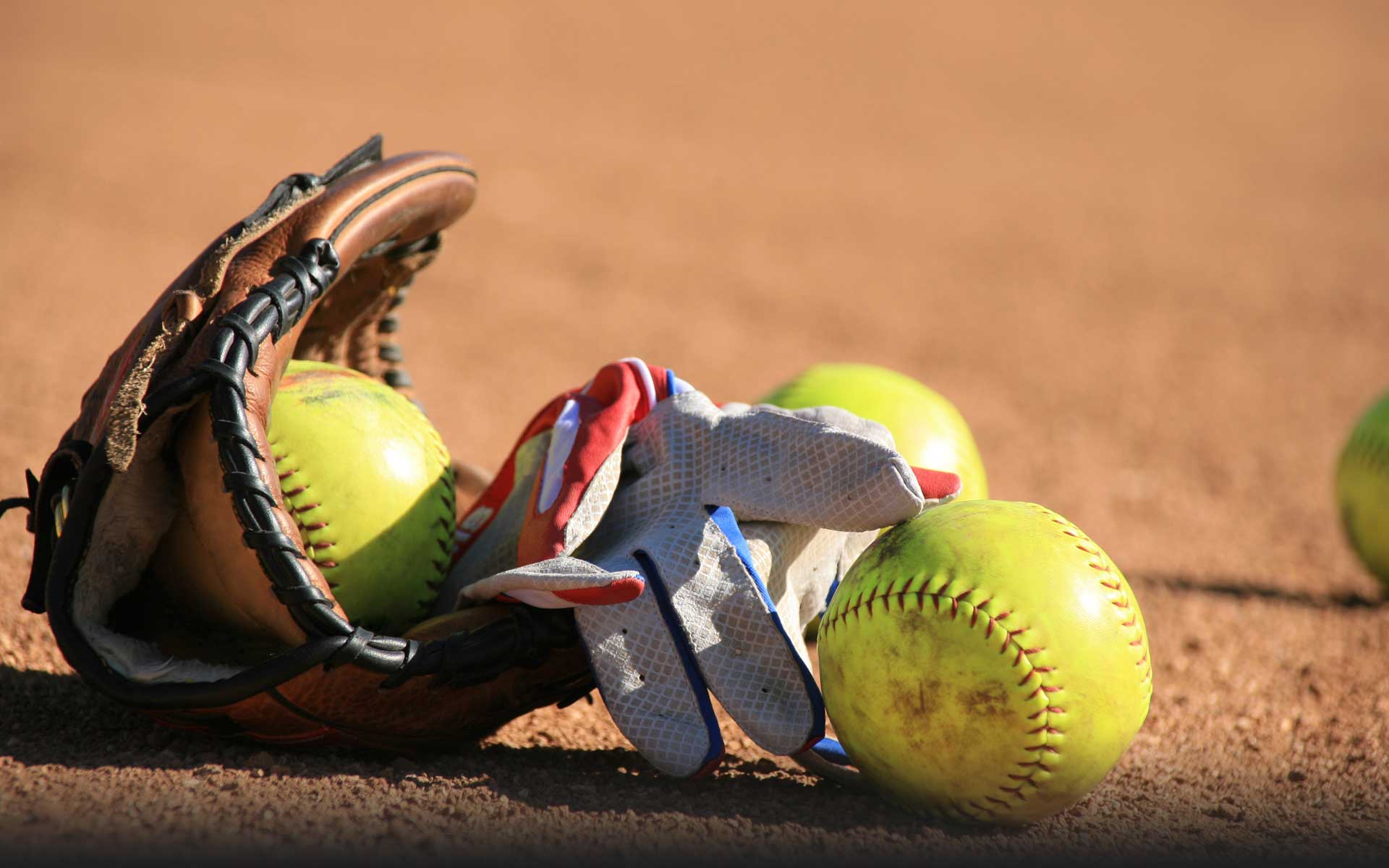
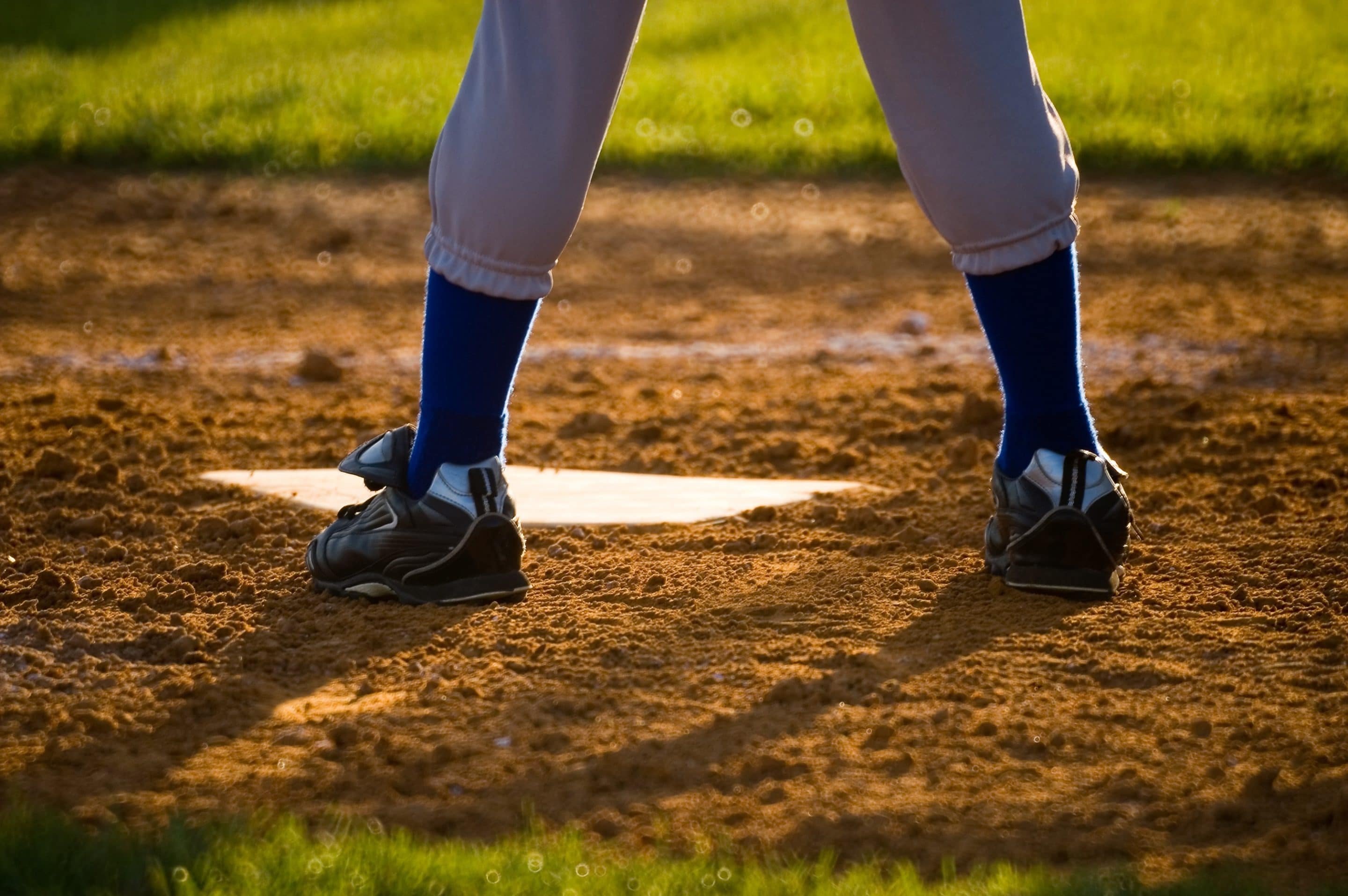
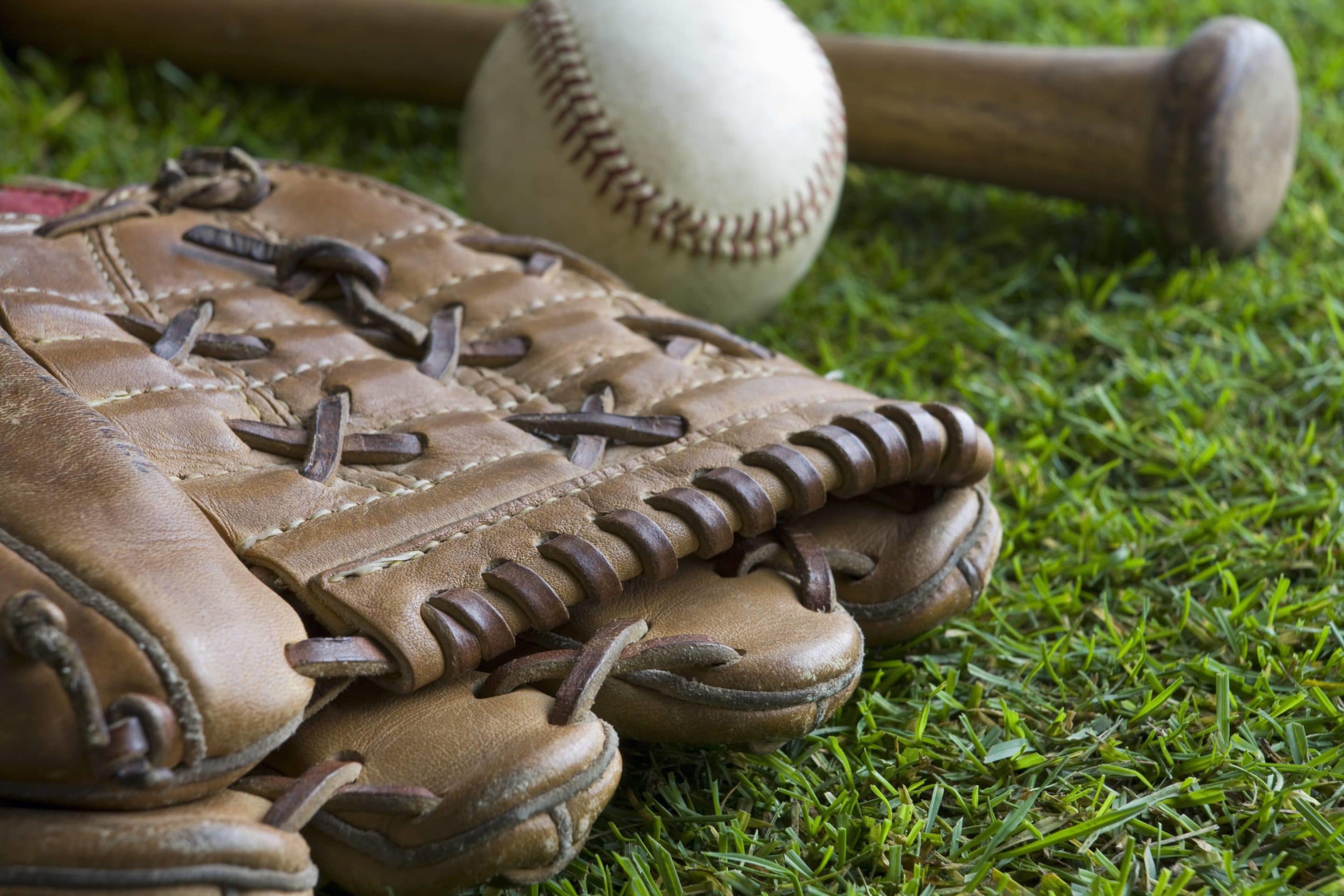
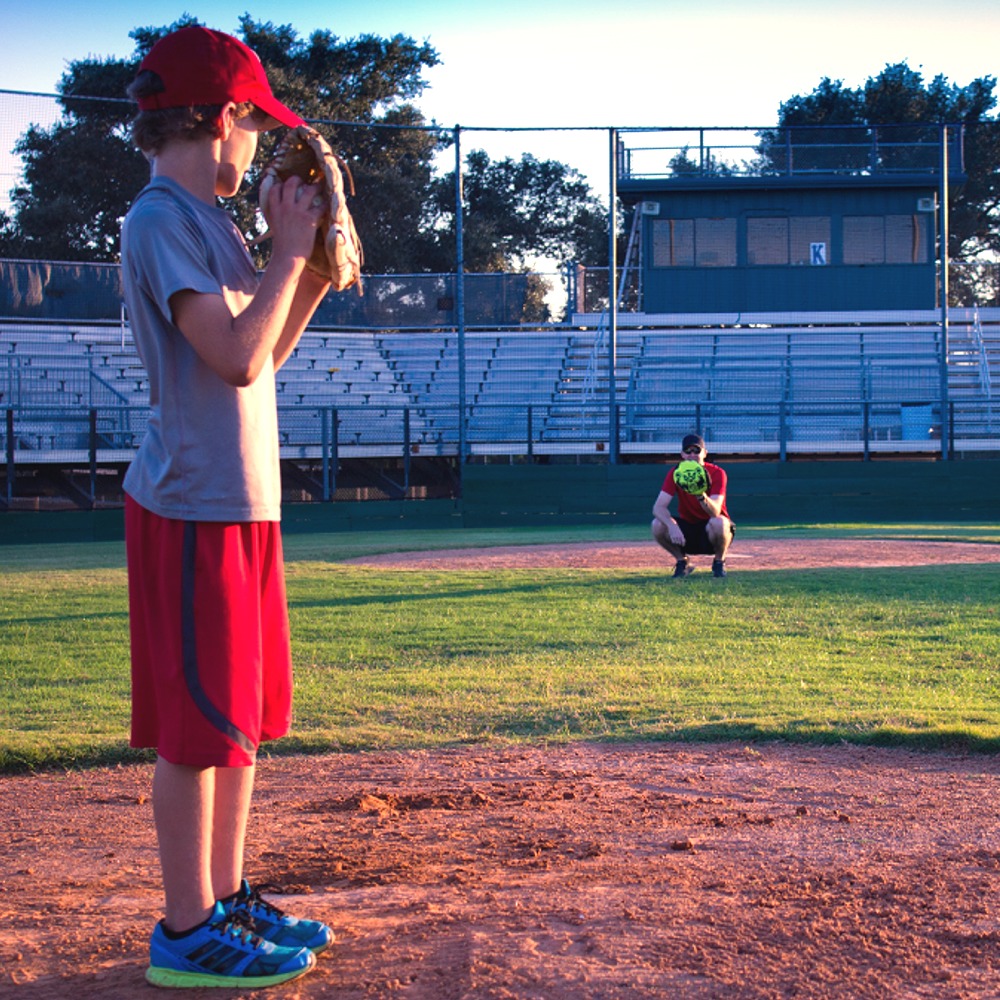
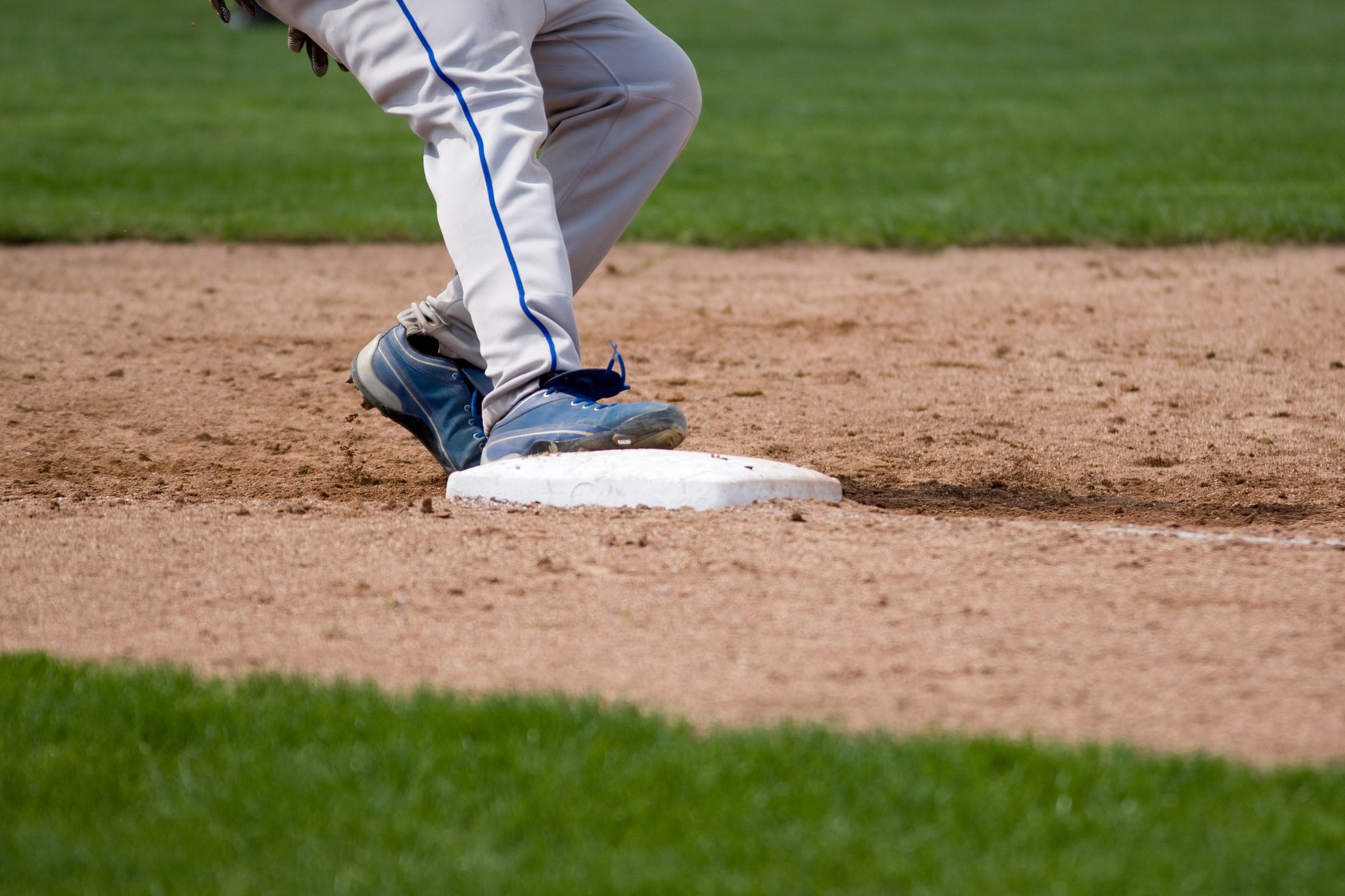
Hi Jeff,
Thanks for sharing this post. My own point of view, “Easton 2015 YB15X3 XL3 ALUM -11 Youth Baseball Bat” is Fantastic Bat. It’s hot right out of the gate. No breaking it in.
My 10 year old has the Mako XL and was looking for an aluminum as well and if you don’t mind a one piece this has the same pop as the Mako XL. Now the Mako XL only has about 500 hits off of it so there maybe a little more breaking in needed. Thanks…
Regards,
Kayla Robey
Quick question on sizing up a bat. When you say they should be able to hold a bat with their arm at shoulder length for 10 seconds. Is that with one hand? Also, holding the bat straight out in front of them or out to the side?
Thanks,
AJ
Hey Adam, thanks for writing in. That is with one hand and holding the bat out to the side. We went back and edited this section for clarity.
I know this article is old, but it has been very helpful so thank you for writing it. I did notice that you listed weight measurement as pounds instead of ounces in at least one paragraph for the bat weight. Just a FYI in case you can edit the article still. I made the same mistake myself talking to a guy at Dicks and he corrected me. lol
My son have an Easton brand big barrel bat. The sound that the bat makes when it makes contact is what my son finds so appealing about it. Even an eight-year-old child can easily handle the bat because of its light weight. The bat has the advantage of being firm in any hand size.